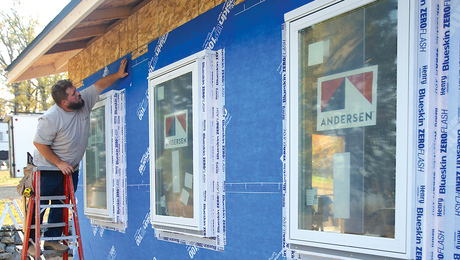Sub-floor prep for vinyl plan flooring
I am doing my first install of a Luxury Vinyl Plank (Shaw Primavera) floor and am wondering how important it is to have an absolutely smooth and flat floor. My OSB sub-floor has some uneven joints with some perhaps as much as a 16th offset from the next piece in places. Is it critical that I try to smooth these joints, either by belt sanding the high spots or filling the low spots, or both? If so, what filler material would be the best to user? I thought about possibly using EasySand.
Also, the sub-floor squeaks a bit in places so I planned to just add a lot of deck screws into these spots to see if that fixes it. Does anyone have any better ideas for this problem?
Any suggestions would be greatly appreciated.
Thank you



















Replies
The manufacturer should have technical support call them. I would imagine that an additional layer of 1/4 ply with a smooth side should be laid with the joints staggered from the OSB joints.
Shaw installation instructions says an underlayment is "not generally needed", although I suppose it can't hurt. They do say "Subfloor must be flat – 3/16" in 10' or 1/8" in 6'". Thanks for your comment.
flat is essential as anything offset will telegraph through the finish floor, thinking especially vinyl plank as it's fairly soft. Level is not as important as the vinyl plank is flexible enough to follow the surface.
you could use some leveling compound to fair out the high and low spots at the joints, and possibly use self leveling cement/compound to level the floor surface
if you go with adding 1/4 inch underlayment, check your clearance for doors/thresholds etc.
good luck
I'm undecided on underlayment but will definitely pick up some Henry patch n' level from HD. Thanks for your comment.
A 1/16 off set is definitely too much. It may not cause visible problems immediately, but if it's subject to any kind of traffic, it will wear on the edge of the offset.
An alternative to leveler is a belt sander. Sort of depends on whether the offset is because one side is high, or the other is low. Check the floor carefully in both directions with a 4 foot straight edge. To guide your next steps, write high/low notes on the floor with arrows pointing towards the areas to be sanded or filled.
You'll probably need a sander even with leveler. You may want to take steps to control dust- it will float everywhere.